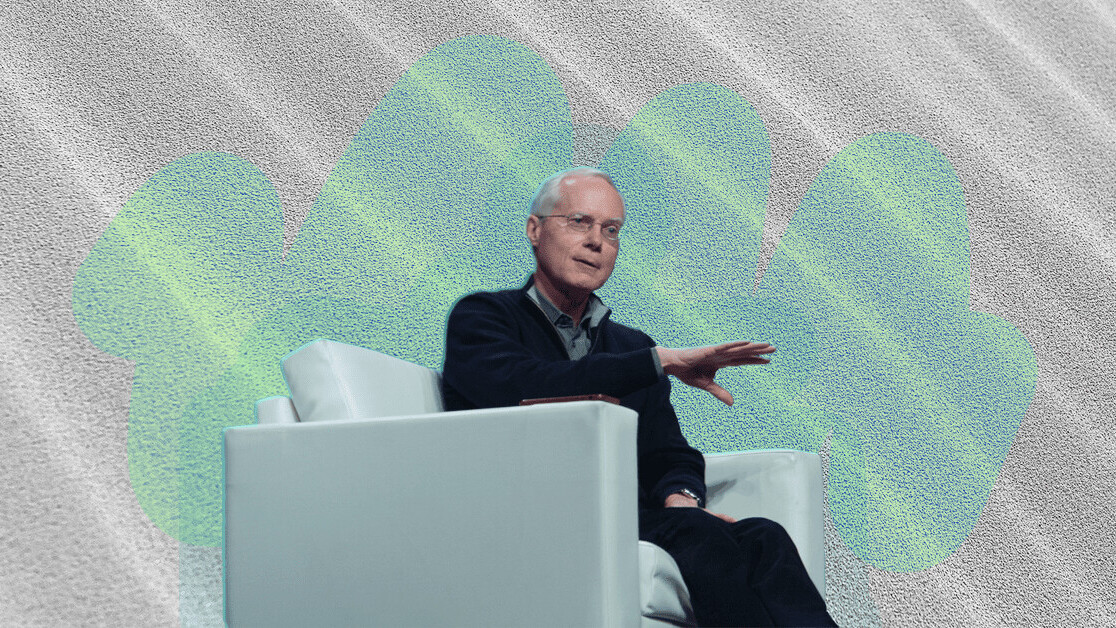In the case of many technology companies, when you’re talking about the founder, it is the person who successfully brought a great new innovation to the world.
They are often the big personalities behind the corporate stories; they are visionary leaders who drove the companies through transformative steps over decades.
The only difference in Silicon Valley is that there haven’t been many iterations or generations of leaders.
The founder’s story isn’t in the archives, and neither is the founder. Many founders are still involved with the company.
[Read: As a CEO I’m often wrong — but that’s okay]
There’s a little mystique to founders and often an aura of brilliance that can make them intimidating and difficult to work with.
I brought those worries and assumptions with me when I stepped into the role of chief innovation officer at Intuit.
There is an aura about Scott Cook, Intuit’s founder, and a big star power in how employees think of him around our campus.
I knew that most employees saw him as the “real” chief innovation officer, and my challenge was figuring out how to work with him in my new role. In fact, most days I had to tell myself: Breathe, Bharath, and don’t mess it up!
I shouldn’t have been apprehensive because I knew Scott Cook in my previous roles in the company and admired him a great deal.
But looking back, I now realize that his actions contributed as much to my success as my own actions.
In very short order, he became vested in me as a mentor, a founder , and a friend.
Becoming friends with the founder
In my early days at Intuit, one of my first assignments was to travel with Scott around the world to our office in India.
My objective was simple: to shadow Scott, meet with the local teams, and uncover new opportunities.
I was there to learn from him, and I assumed to be evaluated by him. And after our first day of meetings, Scott and I sat down for a debrief.
His plan for that discussion was something that I didn’t expect at all. I was getting ready to ask Scott how I performed during the day.
Instead, Scott asked me: “How did I do in our meetings today?” It was a startling question, coming from the founder to me, the new guy, but I quickly learned that this was a hallmark of who Scott was: A down-to-earth, curious and continuous learner who was always focused on giving the best to everyone else.
It set the precedent for the rest of the trip because he showed me that he was interested in working with me, instead of evaluating my performance as a brand new leader in the company.
Today, Scott remains heavily involved in coaching me, members of my team, and many teams across the entire company.
He pushes us on the customer of the future, the unique challenges ahead, and the opportunities to create novel solutions.
He has helped me build a culture where engineers, data scientists, product, program and design leaders, are thriving as they explore opportunities for the next decade of emerging technologies.
How to innovate like a Silicon Valley founder
Over the years, I’ve observed Scott’s methods and believed that they could be useful lessons to everyone who is focused on innovation.
I initially thought that Scott’s ability to listen and seek feedback was innate to who he was.
He has an ingrained sense of humility to know what he’s doing wrong and what he could do better.
[Read:How I use note-taking to understand my team better]
But I’ve observed enough about his leadership style through the years to learn that it took a more intentional effort on his part to get to the openness that we see in him.
Here are four key techniques that I have learned by working with Scott over the years that work well to fuel innovation.
1. Listen with discipline
It seems simple, and yet it can be the toughest roadblock to overcome. Most people come into a room to listen to the founder, not to have the founder listen to them. But Scott listens.
He listens patiently, taking copious, detailed notes. By doing this, he rarely interrupts the team’s train of thought and he organizes his thinking to help a team see a broader perspective. And provides his thoughts and comments only after he has fully heard from everyone in the room.
By speaking toward the end, Scott creates a forum for a fully open discussion. Needless to say that I have fully adopted this technique!
2. Teach methods, not tactics
Scott has taught me the importance of creating and teaching methodologies, not tactics.
Methods teach your employees how to think to solve problems, tactics tell employees to implement solutions.
For example, Scott has led our organization to embrace a design-thinking model that we call Design for Delight that starts with an outside-in approach on understanding problems and brainstorming multiple solutions. This method is incorporated in our new hire onboarding, our internal workshops and even through trained “innovation catalysts” who teach the methodology to others.
3. Keep innovation teams small
As I settled in at Intuit in my early days, my charter was to create new products for new global markets.
I decided that I needed a team of 6 people to start each new product initiative – a very small ask. With my proposal in hand, I went to Scott and the CEO and asked to create two new product teams.
[Read: What being a CEO has taught me about delivering bad news]
As I described above, Scott listened, nodded, and then said: “Yes…and I think, to get started, you should work in teams half the size of what you’ve proposed – start with 3 members for each new product.”
He thought smaller teams would move nimbly, lean on each other more and collaborate more effectively. It would force us to keep the problem we are solving uncomfortably narrow.
He was right, and it became a model that still serves us well today.
4. Fall in love the problem, not the solution
One of the things that Scott is probably best-known for at Intuit is his appreciation for our customers and their problems.
We call ourselves customer-obsessed, and Scott models that.
Stories of how Scott followed customers to their homes and watched them interact with our product are an important part of our history.
He believed that customers engage differently with a product when they’re in the comfort of their own environment as opposed to a focus group, and we should bring those insights with us back to the office.
We’ve learned to “fall in love with the problem,” instead of the specific solution. This approach leads to us pivot on our solution as we learn more as we iterate the solution with our customers.
[Read: Why you should wear roller skates to your next networking event]
Even today, our 9,000+ person company still conducts follow-me-homes in all aspects of the business.
And in fact, it’s the insights on the problem that fuels the design for delight methodology that we use throughout the company.
I know that I have benefited immensely from Scott’s mentoring. And, he’s taken his innate curiosity and turned it into a coachable process that has helped hundreds innovate successfully at our company.
And yes, there is still a little aura when he walks the campus. And our employees are anxious to sit in a room with him as much as they yearn to collaborate with him.
He has found a way to nurture innovation and has created a culture of innovation that has thrived at Intuit for more than 35 years.
And I think we’ve all learned that innovation is not reserved for a sudden stroke of brilliance, but rather can be harnessed, fostered and taught.
And maybe that’s the real creative genius of our founder, Scott Cook.
Get the TNW newsletter
Get the most important tech news in your inbox each week.





